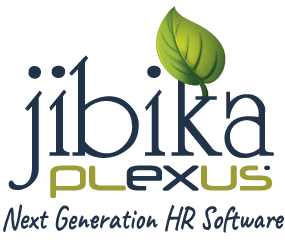The surprising fact you would be amazed to know is the global ERP software market estimated to be worth $41.69 billion by the year 2020. While that number is impressive, it can be hard for those who have never used it to understand why ERP software is essential in Bangladesh. But as globalization squeezes the market for many sectors, it’s essential to look for all the resources you need to get your businesses automated.
What is ERP software
Enterprise resource planning ( ERP) refers to a kind of software that companies use to handle everyday business activities such as accounting, procurement, project management, risk management, and compliance, and supply chain operations. A complete ERP suite includes management of company results and tools to help schedule, budget, forecast, and report on the organization’s financial resource.
ERP systems connect a host of business processes and allow data flow between them. Through gathering the shared transactional data from different sources for an enterprise, ERP systems reduce data duplication and provide a common source of truth for data integrity.
Benefits of using ERP software in Bangladesh
Enterprise resource planning software is used to manage several business functions, but how is it any better than other solutions? Even though ERP may have similar goals to other solutions, its unique features make it a distinctive competitor in the software market.
1.Save Your Money
While in recent years, many vendors have implemented flexible pricing, ERP packages are still a significant investment. For others, it might seem doubtful that the system would save the company any money because of the high costs. But once you’re over the sticker shock, it’s easier to see how ERP can offer a high ROI.
2. Better collaboration with ERP
The features of ERP applications differ slightly depending on the software you are using but, generally speaking, all systems somehow enhance collaboration. As stated earlier, the centralized database is part and parcel of what makes an ERP special. With this site, you’ll have a common source of truth for your business to operate from. This eliminates any errors caused by using incorrect data and also high costs.
3. Have a tremendous analytical overview
A central knowledge database also helps to enhance the monitoring and reporting. It makes for an excellent business intelligence tool because ERP records and stores all the data users send. The ERP program makes it simpler and quicker for your team to produce different reports as long as your provider offers excellent functionality. Documents which could take days, without study and compilation ERP will take some minutes.
4. Improved Inventory Monitoring
The tracking and monitoring of their rising stock rates is a significant challenge for growing businesses. ERP uses barcoding, RFID tags, and serial numbers to keep track of the products across the supply chain. Such resources allow you to keep track of inventory levels at various warehouses, items in shipment, and which products are ready for customers on the shelves.
5. Client satisfaction
The whole automated process is always accurate. So the customers find it comfortable to work with your company. Also, productivity rises because of proper management.
How to automate your business process with ERP software
In Bangladesh, ERP software enables you to automate your business. Wondering about the automated business process? Let’s see how it works:
This is a full paperless option. Several businesses have chosen to go paperless and have taken steps. That papers are more of havoc piling on desks and stacked in drawers is a reality. The custom of using as few as possible of papers allows the data of a company More functional entry structure. Many companies have done away with paperwork by introducing an automated ERP solution.
When one wonders, “What is ERP doing? “The solution is almost always automation. This ERP capability automates repetitive tasks such as order entry, payroll, accounting, invoicing, reporting, and more. Automation reduces the many hours that the workers will usually spend on these systems, allowing them to concentrate on more critical tasks. The optimization of the time of the workers ensures more excellent work ways.
Additionally, automating the processes will reduce human error. If the workers spend most of their day doing the same job, again and again, they are likely to make a mistake or two. Automation permits the transfer of data from one part of the network to another, without any risk of error. Even minor errors can ultimately cost your company, so why not eliminate them wherever possible?
Many people synonymously use the words “reporting” and “research” when thinking about ERP. Although this isn’t usually a problem, differentiating between the two is still relevant. You may think of ERP’s reporting functionality, like the tools required for conveying information to an end-user. These resources also include dashboards that can be personalized, Gantt maps, pie charts, bar graphs, and other visual representations.
Manual vs. ERP Software
Manual processes and paperwork sabotage the growth of the company. Suppose workers can’t find the correct spreadsheet, waste time inputting data, or base decisions off typos. In that case, they can’t make decisions efficiently that help the business capitalize on new opportunities and grow market share. This applies especially to manufacturers that manage complex supply chains and regulations.
One of ERP Software in Bangladesh’s most exciting benefits is its ability to automate processes and streamline data flow. ERP provides users with easy access to useful insights by providing a central hub for back-office information and cuts down on the steps it takes to conduct operations. This gives rise to new levels of precision and productivity. Find out some of the development processes that ERP can use automatically.
Final words
ERP is a powerful tool for data management. It streamlines business operations by automating the bulk of data-driven processes, carrying out comprehensive data analysis, and providing effective data processing, all within an intuitive, integrated system.






